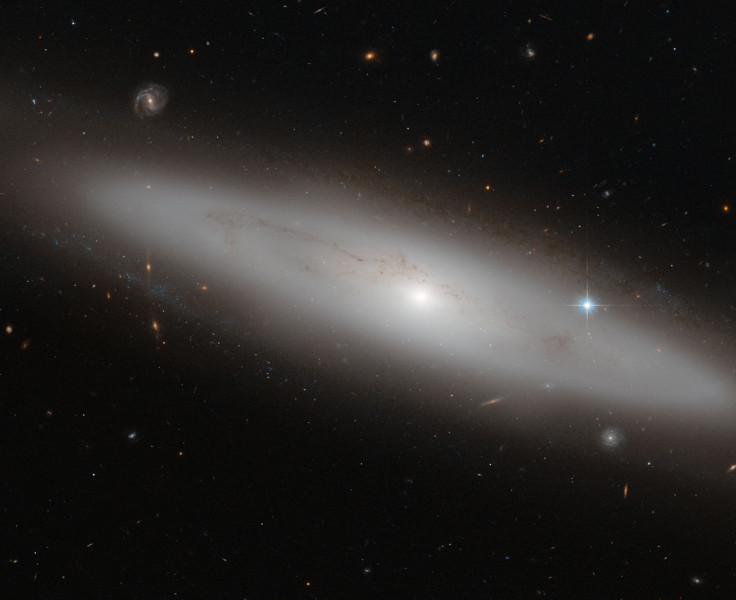Hubble Telescope Spots Rare Galaxy In The Constellation Virgo [PHOTO]
In its latest image of the constellation Virgo, the Hubble Space Telescope captured an image of the galaxy NGC 4866. The galaxy is classified as a lenticular galaxy and shares properties found in elliptical and spiral galaxies.

NGC 4866 is approximately 80 million light-years from Earth. Lenticular galaxies do not have much star formation activity found within the galaxy and feature many older stars. One of the unique features of these types of galaxies is the visible dusk disc. In the Hubble image, the large dust disc surrounding the central bulge is clearly visible. The central bulge is a shared trait with spiral galaxies, but lenticular galaxies do not have defined arms that extend outward.
The disc structure is also unique to lenticular galaxies. Depending on the viewing angle, lenticular galaxies can be confused for elliptical galaxies, but the dust disc can help astronomers distinguish between the two. In terms of similarity, elliptical and lenticular galaxies are made up of older stars with little star formation activity present in the galaxy.
Another interesting feature of the Hubble feature is the result of an optical illusion. The bright star to the right of the central bulge is not found within the galaxy. Instead, the star is in front of the galaxy and closer to Earth than NGC 4866.
The Hubble photo features several types of galaxies in addition to NGC 4866. As NASA points out, spiral, elliptical and irregular galaxies can all be seen in the photo of NGC 4866. While NGC 4866 is rare, it is not the only lenticular galaxy found in the constellation Virgo. Last year, Hubble was able to observe NGC 5010. As NASA describes the galaxy, NGC 5010 is currently transitioning from a spiral galaxy to an elliptical galaxy.
Most of the gas and dust needed to create new stars has long been used and the majority of stars are older, redder stars. In the future, NGC 5010 will become an elliptical galaxy, with no defined features and are spherical in shape.
© Copyright IBTimes 2024. All rights reserved.




















